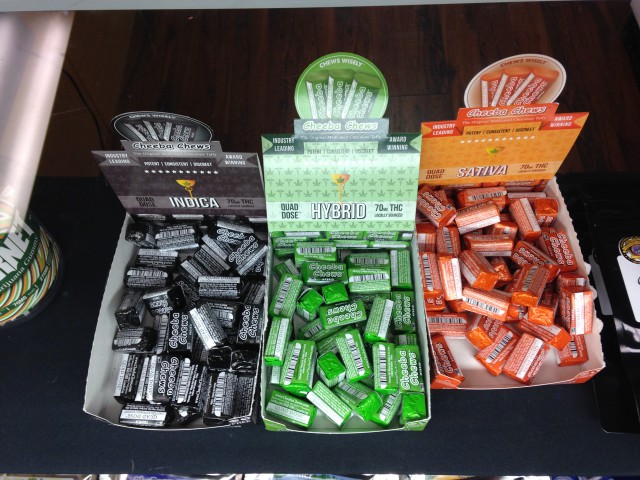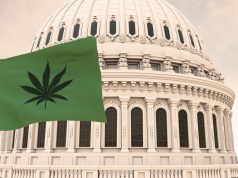
It should be no surprise that the working group tasked with coming up with a recommendation to the legislature about how cannabis edibles should be marked ended after four sessions and no consensus.
The working group came about because of House Bill 1366, which directs the State Licensing Authority to develop recommen dations for better ways to clearly mark edibles as cannabis products by 2016. Rep. Jonathan Singer, a member of the working group, put it succinctly: He wants to distinguish a marijuana edible just as he can a regular candy bar.
That doesn’t sound difficult, but I attended the first of the four sessions — the last was Monday — and it was pretty obvious that the stakeholders, which included edibles makers and bakers, parenting groups, school, police and revenue officials, testing-center owners and advocacy groups, weren’t going to be able to agree on much.
So instead of a recommendation, there will be a summary of the disagreements sent to the legislature to mull as it begins to complete regulations under 1366, and it will then be up to legislators and lobbyists to work out the details.
The state health department suggested a commission that would approve edibles before they go to market. This doesn’t sound promising. Would the thousands of products already legally on the market be grandfathered in or face a recall process? Most importantly, who would have the authority to decide whether something “might be” attractive to a teenager? Members of SmartColorado? Edibles makers? Teenagers themselves? Would a commission have more luck than the working group in consensus-making? And would it trigger lawsuits since Amendment 64 allows edibles of all kinds?
Ultimately, this again shows that there is a limit to how much government can do to protect everyone from everything. The governor pissed away millions of dollars this year trying to scare kids away from marijuana. But since kids aren’t getting cannabis from legal retail stores, how about spending some money aimed at parents and adults to remind them that it’s up to them to keep their cannabis products, like alcohol or guns or poisons, away from their children?
Somehow, I don’t see that happening when House Bill 1366 gets to the legislature next year and the lobbyists go to work. Look for some strange compromises next year.9
It’s probably not of major importance in the long scheme of things, but a couple of interesting facts about the midterm elections were that in states where it was on the ballot, more votes were cast for legalizing cannabis than for senators and representatives, and the state that got the highest percentage of votes didn’t pass its initiative.
In Florida, Gov. Rick Scott got 2.8 million votes and Attorney General Pam Bondi received 3.2 million. Not bad numbers, but even though Amendment 2 failed to reach the 60 percent approval needed for passage, it received 3.4 million “yes” votes, which is 58 percent of the electorate and more than any elected official in that state.
In Alaska, 116,803 voters cast their ballots for Measure 2, more than for winning Rep. Don Young, Gov. Bill Walker or Sen. Dan Sullivan. Only Supreme Court Justice Craig Stowers got more votes (118,176) than marijuana. Democrats John Kitzhaber and Jeff Merkley won their races in Oregon, with 714,411 voting for Kitzhaber for governor and 792,268 for Merkley as senator. But 822,078 Oregonians voted for legalization Measure 91.
“There’s clearly a lesson to be learned here,” Oregon Rep. Earl Blumenauer, who helped get the hemp attachment onto the latest federal Farm Bill and appeared with Rep. Jared Polis earlier this week with two bipartisan bills that would allow cannabis businesses access to banks and regular business deductions, told the Huffington Post. “And I sincerely hope that Democrats at the national level are paying attention as they start looking to the 2016 elections.”
What the votes and rhetoric indicate is that Republicans, as well as members of Congress, are joining Democrats to find a way to end the war on cannabis. But until Congress sees fit to end its Schedule I classification, changes will have to continue on a state level.
That bandwagon is still rolling. In California, Proposition 19, which would have made it the first state to legalize cannabis, was defeated in 2010. There will most certainly be another one in 2016 that, if passed, would make the entire West Coast cannabis-friendly. Look for initiatives in at least Arizona, Maine, Massachusetts, Hawaii (which already has twice as many signatures as it needs), Nevada and perhaps even in Missouri for the 2016 ballot.
The FBI Uniform Crime Report for 2013 shows that 693,482 Americans were arrested for cannabis in the first year of legalization in Colorado and Washington. That’s a drop of 56,243 from the previous year, a 7.5 percent decline from the 749,825 arrests in 2012. Not all arrests are prosecuted or wind up with imprisonment, but that still means that more than a half million Americans are still being threatened and hassled for nothing more than cannabis possession.
But watching these numbers continue to decline, as they have now for four straight years, is encouraging. With Oregon and Alaska joining the legal states and many cities, counties and municipalities decriminalizing possession every month, hopefully those numbers will shrink even more sharply as the years pass.
You can hear Leland discuss his most recent column and Colorado cannabis issues each Thursday morning on KGNU at http://news.kgnu.org/category/features/weed-between-the-lines/
Respond: [email protected]














